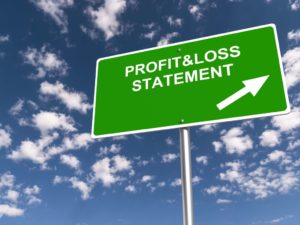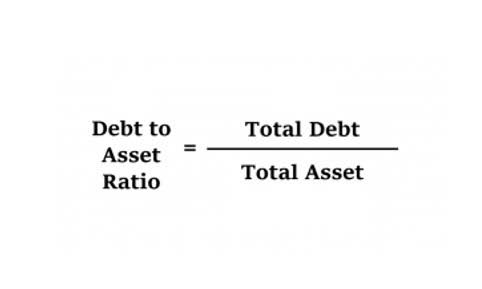
Most companies are reluctant to issue noncumulative stocks because shrewd investors are unlikely to buy this class of shares—unless they’re offered at significant discounts. Callable shares are preferred shares that the issuing company can choose to buy back at a fixed price in the future. Preferred stock is often compared to bonds because both may offer recurring cash distributions. However, as there are many differences between stocks and bonds, there are differences with preferred equity as well. While the fixed dividend rate provides a measure of stability, investors should still income summary be prepared for some degree of price volatility.
- Convertible bonds and noncumulative preferred stock are both combinations of debt and equity, they are very different in structure and what they provide for investors.
- Furthermore, the priority of dividend distribution makes another strategic appeal.
- Risk mitigation strategies include risk avoidance, risk transfer, risk reduction, risk acceptance, contingency planning, and regular risk assessments.
- Preferred stock is like a bond because the income provided is more predictable than common stock, is rated by major credit rating agencies, and is given higher priority than common stockholders.
- The fixed dividend rate is usually expressed as a percentage of the stock’s par value, and it remains constant throughout the life of the stock.
Tax-Advantaged Income Potential
Unlike cumulative preferred stock, noncumulative preferred stock is used more Accounting for Churches like equity, as it is not considered a debt obligation. Dividends are fixed and paid to shareholders, but missed payments are not accumulated for the future, but forfeited instead. Unlike convertible bonds, noncumulative preferred stock does not allow investors to convert to capitalizing on a rise in stock price. The combination of fixed dividend payment and corporate financial flexibility is unique to noncumulative preferred stock. Higher dividend yields and the fact that they’re paid prior to common shareholders are appealing, but they come at the risk that investors lose the dividends if the company skips payments. But this makes it a good choice for income focused investors willing to take a bit of risk for the chance of greater returns.

What Are Noncumulative Preference Shares?

Noncumulative preferred stock has the disadvantage of forfeiting missed dividends, having limited growth potential, being vulnerable in downturns, and having lower liquidity. Non-cumulative preferred stock provides flexibility in dividend payments, reduces financial obligation, and carries lower risk for investors. The unpaid dividends on noncumulative preferred shares (stock) are not carried forward in subsequent years.

How we do business
- However, it also offers a higher return potential due to the accumulation of unpaid dividends.
- The returns of preferred stock are bond like, but equity like, and thus are well suited for investors who already own a significant amount of common stock or bonds.
- Non-cumulative preferred stockholders are typically ahead of common stockholders when it comes to dividend payments and liquidation proceeds.
- The noncumulative characteristic enables firms to suspend dividend payments during bad times, like the economic downturn in France, without the liability buildup characteristic of cumulative preferred stock.
- This means that preferred stockholders are more likely to recover a portion of their investment before common stockholders receive anything.
- Non-cumulative preferred stock can be a valuable addition to an investor’s portfolio, but it’s important to conduct thorough research and understand the potential risks and rewards before investing.
- Regulators often scrutinize noncumulative instruments due to their potential misuse.
Noncumulative Preference Stocks are the stocks that are issued by the companies, but then the issuer may skip or decide not to pay the dividends to the shareholders any longer. Moreover, the shareholders too do not have the right to claim for the unpaid dividends. In short, such stock options keep the firms free from obligations concerning sure-shot dividend payments. Typically, this preferred stock will trade around its par value, behaving more similarly to a bond.

- All such information is provided solely for convenience purposes only and all users thereof should be guided accordingly.
- Companies with a strong track record of paying dividends and a low payout ratio may be more attractive investments.
- Preferred stock dividends are sometimes considered qualified dividends for investors, who pay a lower rate of tax on this income than ordinary income.
- Convertible preferred stock strikes a balance between income and growth potential, appealing to investors looking for a dual advantage.
- Unlike traditional bonds, noncumulative bonds do not accumulate interest over time.
- Knowledge of these rules helps investors maximize after tax return on their investments.
For instance, changes in regulations regarding the treatment of unpaid dividends could affect the appeal of noncumulative preferred stocks. Similarly, alterations to tax laws may impact the after-tax return for investors, modifying their investment decision. The issuance of non-cumulative preferred stock can have a nuanced impact on shareholder equity, influencing both the company’s financial structure and noncumulative preferred stock the perceptions of various stakeholders. When a company issues non-cumulative preferred stock, it raises capital without the immediate obligation to pay dividends, providing a buffer that can be particularly useful during periods of financial uncertainty. This flexibility can enhance the company’s liquidity and overall financial stability, which in turn can positively affect the company’s credit rating and borrowing capacity. As with convertible bonds, preferreds can often be converted into the common stock of the issuing company.

